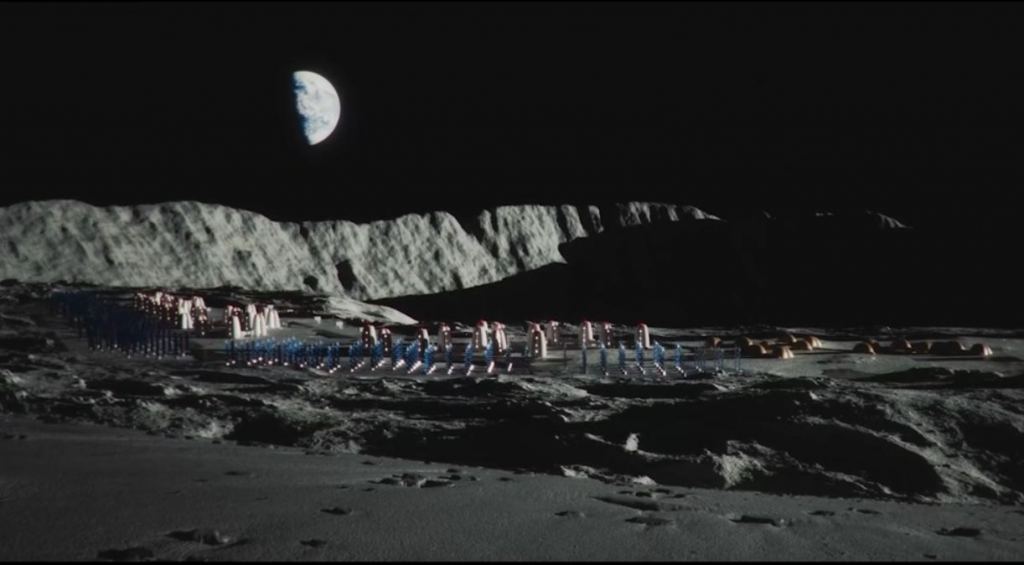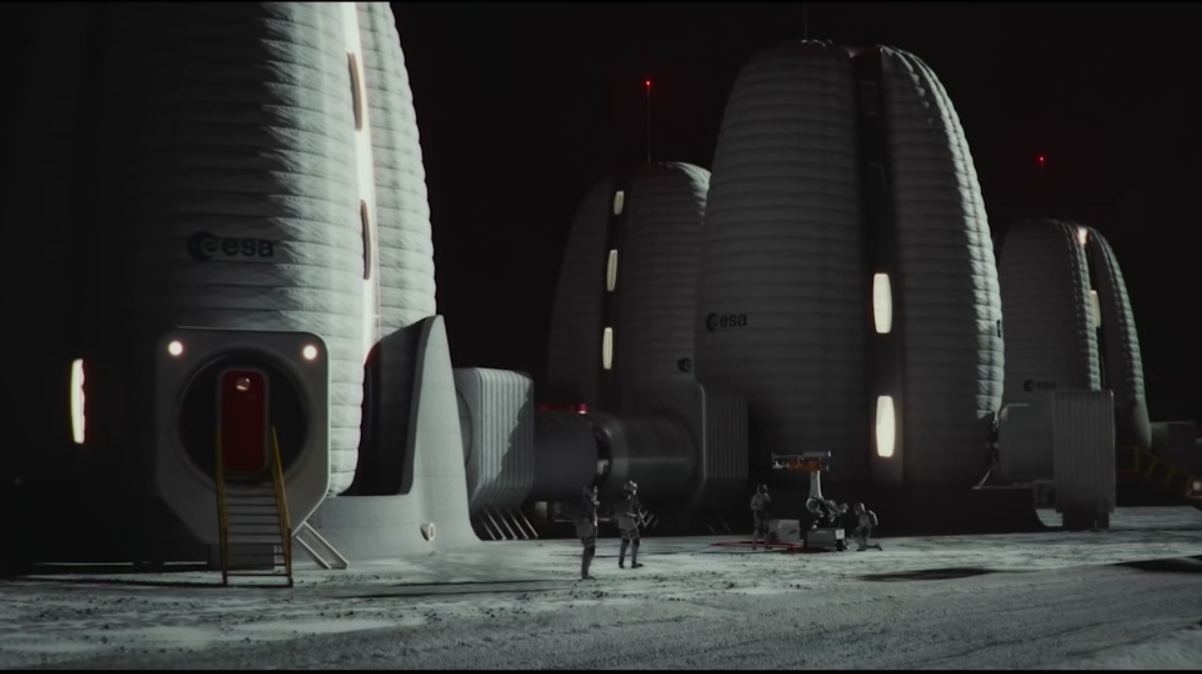Between now and the end of this decade, multiple space agencies plan to send astronauts to the Moon for the first time since the Apollo Era. But whereas Apollo was a “footprints and flags” affair, the current proposals for lunar exploration call for the creation of infrastructure that allow for a sustained human presence there. In addition to NASA’s Artemis Program, the ESA is also working on a plan to create an “International Moon Village.”
For years, the ESA has released teasers as to what this “successor to the International Space Station” (ISS) might look like, the latest of which is on display at the La Biennale di Venezia museum in Venice. As part of the 17th International Architecture Exhibition, the architecture firm Skidmore, Owings & Merrill (SOM) showcased their design (with technical support from the ESA) for a semi-inflatable lunar habitat that could facilitate long-term lunar settlement.
While the theme of this year’s Architecture Exhibition – which will run from May 22nd to November 11th – is “How will we live together?” This is organized into five scales, consisting of “Among Diverse Beings,” “As New Households,” “As Emerging Communities,” “Across Borders,” and “As One Planet.” The SOM installation (which cuts across some of the scales) is titled “Life Beyond Earth” and envisions how humans can live sustainably in the hostile environment of space.
The SOM installation consists of two large-scale models of the habitat and a film (shown below) that depicts a habitat module being delivered to the Moon and integrated with others to form a fully operational “village.” The SOM design is based on a semi-inflatable shell structure, which offers the highest possible volume-to-mass ratio (and is more cost-effective to launch to the Moon).
Once they reach the lunar surface, the modules are inflated and almost double in terms of their original volume. The interior of each module consists of a four-story, high-to-floor ceiling environment with internal lighting and reconfigurable features. This allows crews to take advantage of lunar gravity (16.5% that of Earth) by ascending and descending between storys with ease (which is assisted with bars and other simple aids).
The video also showcases the chosen site for the future Moon village, which is inside the rim of a massive lunar impact crater. This is the Shackleton crater, which resides in the South Pole-Aitken Basin and measures 21 km (13 mi) in diameter and 4 km (2.5 mi) in depth. This location is considered an ideal spot for a lunar base since the floor is permanently shadowed and therefore immune to the extreme variations in temperature on the lunar surface.

Because the Moon is tidally-locked with Earth (where one side is constantly facing towards it), the lunar surface has a day/night cycle that lasts about as long as a month on Earth – on average 29 days, 12 hours, 44 minutes, and 3 seconds. During a two-week-long “Lunar day”, surface temperatures away from the poles can reach as high as 390 K (117 °C; 243 °F) and as low as 100 K (-173 °C; -280 °F) during a “Lunar night.”
Within permanently-shadowed craters, temperatures are relatively stable at 60 (-213 °C; -352 °F) to 80 K (-193 °C; -316 °F), while the rest of the polar surface receives near-continuous sunlight. Solar arrays deployed just beyond along the rim could take advantage of this exposure to generate a constant flow of electricity. In addition, Shackleton and other impact craters in the southern polar region have abundant supplies of water ice on their permanently shadowed floors.
Another benefit of building in this region is the constant views it would provide of Earth. Herein is another advantage of being situated in the polar regions of the Moon and the nature of its orbit with Earth. While it is necessary to create habitats that look out onto the surface, providing a sense of connection with the local environment, being able to see Earth will allow future humans living off-world to feel connected to home.

It would also allow anyone living and working on the lunar surface a chance to experience the “Overview Effect” whenever they felt like going for a moonwalk! As Frank White, a “space philosopher” who coined the term, described it in his 1987 book of the same name, this term describes the shift in awareness that occurs when looking at Earth from space – generally describes as seeing Earth as a single, precious system that is not subject to arbitrary borders.
Other possible means for building a lunar base include pairing inflatable structures and 3D printer robots to fashion a base’s outer shell out of lunar regolith – a process known as In-Situ Resource Utilization (ISRU). This can be done using an aggregate made from regolith and bonding agents (i.e., “lunacrete”) and molten ceramic created by bombarding regolith with microwaves (aka. “sintering”) and 3D printing the hot material onto the surface, where it hardens.
Beyond the ESA’s proposed Moon village, these techniques could be used to create the Artemis Base Camp, as well as a Chinese and Russian lunar base. Other parts of NASA’s Artemis mission architecture are showcased in the video, such as the Lunar Gateway and the Multi-Mission Space Exploration Vehicle (MMSEV) – a next-generation crewed surface vehicle that NASA is developing for the Moon and Mars.

This decade and the next promising to be a very interesting and exciting time, where multiple space agencies and commercial partners will be creating the necessary infrastructure to ensure that humans can explore, live, and work on the Moon well into the future. In the midst of all this, the message of the “Artemis Generation” is clear – “We’re going back to the Moon. And this time, we’re going to stay!”
Further Reading: ESA


I am not sure that Apollo was “footprints and flags affair”. From time to time I read about some geological information related to their collected specimens of moon rocks